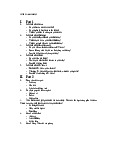

















Preview text:
KHUE: FACTORS FOR IKEA'S SUCCESS AND BRAND IMAGE + TÌM TEMPLATE
(có thể copy trong slide mẫu) - Introduction to IKEA and its history ●
Why is IKEA called IKEA?
IKEA is named after the initials of founder Ingvar Kamprad, Elmtaryd, the farm on which
he grew up, and Agunnaryd, the nearby village.
● IKEA is a Swedish multinational conglomerate which is from humble origins to
global brand – a brief history of IKEA.
IKEA all began in a small Swedish town in the 1940s, with an enterprising boy
who hoped to be able to create a better life for people everywhere.
Later in that decade, IKEA opened stores all around the world such as in Japan,
Australia, Canada, Hong Kong and Singapore. From 1980's onwards, they
opened stores in countries such as France, Spain, Belgium, the United States, the United Kingdom and Italy.
Between 1990's to 2000, they continued to spread to other countries and open
more shops. By the end of the financial year in 2009, the IKEA group operated
267 stores in 25 countries. From 2010 to 2016 up to 125 new stores in 23 new countries
● Today, it’s a global home furnishing brand that brings affordability, design and comfort to
people all over the world, which is one of the world's leading furniture and textile
retailers. IKEA offers more than 9,500 products, including a complete range of home
and office furnishings, equipment, lighting, and accessories. This extensive range is
available in all IKEA outlets, and consumers can order a variety of items online on
IKEA's official website. At this point, there are 18 outlets in the UK, with the first one
launched in Warrington in 1987.
IKEA Retail in numbers:
○ 371 IKEA stores, 8 city stores and 103 other formats
○ 680 million IKEA store visits
○ 3.8 billion visits to IKEA.com
○ 20.3 million downloads of the IKEA app
- Factors for IKEA's success, including its low-cost business model, flat-packaging, and emphasis on design
IKEA has focused its strategy on the core competency of sustaining profitability through a low-
cost business model. This model allows IKEA to examine the true cost involved in a specific
product or process, including the design, sourcing, and operational expenses involved. While
growing its operations, IKEA has also capitalized on maintaining low costs.
IKEA believes that it can be a low-cost leader without sacrificing quality or compromising its
corporate social responsibility. To generate low cost savings IKEA uses a flat-packing process
that allows more merchandise to be shipped and stored between distribution centers. The
company wants customers to understand that their role is not to consume value, but to
create it. IKEA has been able to modify the value chain approach by integrating the customer
into the process and introducing a two-way value system between customers, suppliers, and
IKEA’s headquarters. Through this, the company is able to create a supply chain that is
differentiating and growth enabling, which allows IKEA to operate efficiently.
The concept of IKEA became a niche in the marketplace. In terms of concentrating on consumer
satisfaction IKEA established a true core competency. This simplistic and effective strategy
allowed IKEA to maintain a low-cost structure while focusing on value for customers around the
world in a way that has also sustained profitability.
Good implementation means that an organization coordinates resources and capabilities and
uses structure, systems, processes, and strategic leadership to translate a deliberate strategy
into a realized strategy and to positive bottom-line results. Organizational structure can affect
strategy implementation because if the people, the market, or the systems aren't ready to be
implemented then it can affect the execution of a strategy itself. The way information flows and
the way decisions are made also an important aspect in successfully implementing a strategy.
It's also important to recognize the right people need to be aligned in the right positions. Some
contradictions between levers could be the difference between cultures among business and
how people recognize success and accomplishments. These all-important aspects could greatly
affect globalization. It's important to differentiate between rewards and people and tailor
specifics based on location and culture. It's also important to tailor the strategy to the culture
and coordinate the flow of information and structure in order to implement a successful strategy.
- Brand image and messaging of IKEA, including its focus on affordability, simplicity, and sustainability
Their motto of promoting a ‘better life for everyone’ focuses highly on making it
affordable as well as good quality, making it a point that every customer gets benefits as
well as themselves. They aim to accomplish this by being a customer centric company. All
products are designed with a customer need in mind. ●
Emphasizing Affordability, Simplicity and Sustainability
Understanding that a simple tiered strategy won't encourage repeat business, Ikea
extends customization, flexibility, and mix-and-match furniture modules. It effectively
combines the elements of affordability and sustainability in its marketing strategy to ensure success.
The concept starts with offering affordable products to all (affordability). By
combining function, quality, design and value, always with sustainability in mind. The
Ikea concept exists in every part of their company, from design, sourcing, packing and
distributing through to our business model.
For both the company's customers and employees, IKEA is a unique company.
Simplicity, which is one of IKEA's main features, is the key to the company's
success. This principle is applied to everything, from the way the management operates
to the relationships between managers, employees, and customers. For example,
managers and subordinates work on the same tasks, share the same car parking
facilities, and eat side by side in the same cafeterias ("Our values", n.d.). The company's
personnel is an immensely valuable asset at IKEA, which is perpetually trying to enlarge
the assortment base and improve the quality of its products and services ("Our values",
n.d.). The creative approach and original designs along with reasonable pricing policy
contribute to the company's competitive advantage and explain its success in going through the crisis periods.
IKEA’s core competencies have also helped to accomplish a sustainable business
model. IKEA has a strategy that leverages its unique core competencies, resources, and
distinct capabilities over furniture retailers in the United States. Although IKEA faced
challenges in understanding the American culture in terms of furniture, it was able to
sustain itself through the competency of consumer intelligence. The business model
allowed IKEA to align with what customers wanted.
IKEA was able to strengthen its sustainability by offering something unique to
consumers. The company captured the idea that shopping should be an experience
and changed the way a consumer shopped. IKEA created a destination that included
playgrounds, restaurants with good food, showroom effects, and a relaxed environment
for shoppers. The company also ensured sustainability through continuing to build a brand and positioning itself. -
Analyzing the impact of IKEA's brand image on its success in the US market ●
How customer think of IKEA
A recognizable brand name and strong positioning in the global market give the
company a solid advantage over its competitors.
Perfect match between quality and pricing along with effective cost reducing strategies is
referred to as 'Democratic Design' (meaning good quality at lower prices).
Responsible approach towards market research helps the company to be pro-active about entering new markets.
Wherever IKEA goes, it develops an excellent infrastructure around its location which
makes this company an immediate favorite for the locals.
One of IKEA's major strengths is delivery of products directly from the supplier to IKEA
retail outlets. This cuts down the handling costs, lessens the number of road miles, and
decreases the carbon footprint.
The product development and differentiation are considered to give it a competitive
advantage over the others while keeping its operation costs low. The following diagram
illustrates the correlation between costs and quality. ●
How IKEA stands out from their competitors
IKEA has managed to differentiate itself from its competitors by offering modern furniture
designs at an affordable price. The goal of the differentiation strategy is to create a
compelling brand image that is also powerful, which has helped it gain customer loyalty
and market dominance in many countries across Europe and America.
To gain a competitive advantage, IKEA aims to offer products that are perceived as
being different and better than their competitors.
IKEA has a significant presence in the retail furniture market. Its competitive
advantage lies in its ability to meet customer needs using an extensive product portfolio
and innovative design concepts.
The company uses an interactive website that provides customers with
comprehensive information on products, including how to assemble them depending
on the preferences of their end-users. It is also among the few companies that offer
customers the ability to customize products before purchasing them.
IKEA also uses a unique direct delivery system, where goods are transported directly
from its warehouses to its customers’ homes. Through this strategy, it has managed to
gain customer loyalty in many countries across Europe and North America.
Cost efficiency has also played a key role in the growth of IKEA. The company uses
simple but classy designs to keep costs low and pass those savings onto its customers.
Moreover, its supply chain is designed in a way that allows it to save on freight costs.
HIEN: PRODUCT OFFERINGS AND COMPARISON WITH COMPETITORS
- Overview of IKEA's product offerings, including furniture, home decor, and kitchenware
- IKEA is a privately-held, international home products retailer that sells flat pack furniture,
accessories, and bathroom and kitchen items in their retail stores around the world. And it has
made a reputation as a home furnishing specialist, offering a diverse range of well-designed,
functional solutions at an affordable price. Currently, it sells approximately 8,500 products
ranging from bedding to kitchen utensils, children’s furniture and textiles.
- Much of IKEA's furniture is designed to be assembled by the consumer rather than being sold
pre-assembled. IKEA claims this permits them to reduce costs and use of packaging by not
shipping air; the volume of a bookcase, for example, is considerably less if it is shipped
unassembled rather than assembled.
- IKEA’s value chain is unique in that customers are also suppliers and suppliers are also
customers. The transactions between the supplier and IKEA and on to the customer have a
value adding step in each stage.
Product differentiation exists in the value-added dimension. IKEA’s consumers know the
concept of IKEA of Do it yourself with most of its products requiring assembly after purchase.
But although assistance in this aspect is limited, IKEA offers customer service and home
delivery services which includes transporting and assembling furniture.
- Comparison of IKEA's product offerings with competitors, such as Pottery Barn, West Elm, and Crate & Barrel
- Pottery Barn: Mid-end segment, an American home furnishings retailer owned by Williams
Sonoma. Pottery Barn provides a huge selection of house decorations and furniture, from chairs
and carpets to bedding and lighting. Their unique blend of timeless American and classic
European styles sets them apart, focusing on excellence in craftsmanship for a classic and
stylish look. They sell everything from chairs and tables for the living room and dining room to
beds and desks for the bedroom and office, and even outdoor furniture and decor. Additionally,
they also offer a broad array of upholstered pieces, blinds and curtains, bedding, light fixtures,
carpets, and decorations — the perfect complement for homes.
Pottery Barn has lots of exclusive lines, such as Pottery Barn Kids, PBteen, and Pottery Barn
Outlet, which specialize in furnishing, bedding, and decorations specifically for children and
young adults. Apart from its physical stores, Pottery Barn also has a strong digital presence on
many social media pages and through its website. Individuals can buy items from the website
and have them delivered straight to their doorstep.
Pottery Barn makes an effort to ensure customers have a good shopping experience. They offer
a wide range of services, ranging from design consultations to home delivery. And just like
IKEA, they feature loyalty and reward programs like the Pottery Barn Credit Card, Pottery Barn
Rewards, and Pottery Barn Gift Cards.
- Analysis of IKEA's unique value proposition and competitive advantage in the furniture market
Ikea’s value plan is to “offer a wide range of well-designed, functional home furnishing products
at prices so low that as many people as possible will be able to afford them” -
Ikea Unique Selling Proposition: “To create a better everyday life for the many people”
-> IKEA’s vision goes beyond home furnishing. The company strives to make everyday life
better for people through its offerings. The business idea is “to offer a wide range of well-
designed, functional home furnishing products at prices so low that as many people as possible will be able to afford them
- And also it shows the customer engagement, Ikea business idea is based on a partnership
with the customer. First they design their work with work manufactures to find a smart way to
make furniture, lowest price and then the customer chóose the furniture pick it up self service ->
Ikea dont charge on sth the customer can do on their own -> together save money -> for a better everyday life
- Competitive advantage + IKEA Sells Low-Cost Products
+ Extensive Range Of Home Furnishing and Accessories + International Reach + Business Cost Efficiency
+ Strong Marketing Campaigns (catalog) + …
- Identifying the challenges for IKEA in maintaining its competitive advantage in the US market
- Due to the global economic situation, IKEA faces significant transport and raw material
constraints driving up costs, with no anticipated break in the foreseeable future. Disruptions are
expected far into 2022. The biggest cost increases due to transport and purchase prices are
being felt most in North America
- US consumer: Market research hit upon two challenges that were keeping some US
shoppers from patronizing the store: a segment of consumers found IKEA's huge stores and
shopping experience unappealing, while others identified IKEA's furniture as transitional and
tailored for students and young people.
- Competitors: One huge setback for the company in the US market place is that their goods
are compared to those that can be found at Wal-Mart, Target, and Home Depot, which is a huge
slap in the face to this massive company that promotes innovation and wants to be desired by
all. This trend is due to the DIY mentality, most consumers see DIY as a cheaper option where
the goods don’t have a long lifeline and aren’t high quality. This also goes into saying that an
older generation, specifically the baby boomers, would rather spend their well earned money
elsewhere and know they are receiving a high quality long lasting product
- Advertising: IKEA mainly concentrates on traditional print advertising in the form of a yearly
catalog. That is not something consumers in the US will chew up, since they prefer to see
advertisements on TV or on the Internet. Along with that advertising IKEA also depends on
word-of-mouth promotion, but consumers aren’t seeing advertisements to get them into the stores in the first place.
AN: CHALLENGES FACED BY IKEA IN THE US MARKET AND AUGMENTED SERVICE STRATEGY
Overview of challenges faced by IKEA in the US market, including cultural differences,
competition, and regulatory issues
IKEA, a Swedish multinational furniture retailer, has faced several challenges in the US market, some of which include:
1. Cultural differences: The US market has a diverse population with varying cultural
backgrounds, which can pose a challenge for IKEA in terms of catering to the needs and
preferences of different customers. For example,
● IKEA's minimalist design may not appeal to some Americans who prefer more traditional furniture designs.
● Their beds and kitchen cabinets did not fit American appliances
● Product dimensions were in centimeters rather than inches,
● Kitchenware was too small for American serving-size preferences
2. Competition: The US furniture market is highly competitive, with several large retailers such
as Ashley Furniture, Rooms To Go, and Wayfair competing for market share. Additionally, there
are several smaller, niche furniture retailers that cater to specific customer segments, such as
high-end luxury furniture or eco-friendly furniture.
3. Regulatory issues: IKEA has faced several regulatory issues in the US, including product
safety concerns and labor disputes. For example, in 2016, IKEA recalled millions of dressers
due to safety concerns after several reports of children being killed or injured by falling furniture.
Additionally, IKEA has faced criticism over its labor practices, including allegations of wage theft
and violations of workers' rights.
4. Supply chain challenges: As a global company, IKEA faces supply chain challenges in the US
market, including logistics and transportation issues. Additionally, sourcing materials and
manufacturing products in compliance with US regulations can be complex and costly.
Overall, IKEA has had to navigate several challenges in the US market, including cultural
differences, competition, regulatory issues, and supply chain challenges, in order to maintain its
position as a leading furniture retailer.
IKEA's augmented service strategy
IKEA's augmented service strategy is focused on creating a unique customer experience by
offering a range of services that go beyond just selling furniture. The company's goal is to make
the process of buying and using furniture as easy and convenient as possible for customers.
One of the key components of IKEA's augmented service strategy is its focus on offering
services such as assembly and installation. IKEA recognizes that many customers find
assembling furniture to be a daunting task, and so the company offers a range of services to
make the process easier. For example, customers can purchase IKEA's assembly service,
which involves having a team of professionals come to their home and assemble the furniture
for them. Additionally, IKEA offers installation services for products such as kitchens, bathrooms, and storage solutions.
Another aspect of IKEA's augmented service strategy is its focus on creating a unique
customer experience. The company recognizes that customers want more than just a
functional piece of furniture; they want an experience that is enjoyable and memorable. To
achieve this, IKEA also offers design services and personalized consultations to help
customers create a space that reflects their personal style and needs. Additionally, the company
has immersive showroom environments to give customers a real-life experience of the
furniture. Besides physical showrooms that are designed to be immersive and interactive, as
digitalization is hovering over the entire world, IKEA is a brand that successfully uses
augmented reality technology to allow customers to visualize how furniture would look in their
home using the IKEA Place app. By these unique experiences, IKEA is able to offer customers a
unique and memorable experience that goes beyond just selling furniture, which differentiated it
from competitors, increasing sales and revenue IKEA Place App
How IKEA's augmented service strategy has helped it succeed in the US market
IKEA's augmented service strategy has played a significant role in helping the company
succeed in the US market. Here are some reasons why:
1. Increased customer satisfaction: By offering services such as assembly and installation,
IKEA has made it easier and more convenient for customers to purchase and use their
products. This has led to higher levels of customer satisfaction and loyalty, which has helped the
company to establish a strong foothold in the US market.
2. Differentiation from competitors: IKEA's augmented service strategy has helped it to
differentiate itself from competitors in the US market. While other furniture retailers may offer
similar products, IKEA's focus on creating a unique customer experience and offering a range of
services has helped the company to stand out and gain a competitive advantage.
3. Increased sales: By offering a range of services, including assembly and installation, design
consultations, and personalized product recommendations, IKEA has been able to increase
sales and revenue in the US market. Customers are more likely to purchase products when they
feel that the company is invested in their needs and is offering value-added services.
4. Positive brand image: IKEA's focus on customer service and unique experiences has
helped the company to establish a positive brand image in the US market. This, in turn, has led
to increased brand loyalty and positive word-of-mouth marketing, which has helped to further boost sales and revenue.
Overall, IKEA's augmented service strategy has been a key factor in the company's success in
the US market. By focusing on creating a unique customer experience, offering a range of
services, and investing in customer satisfaction, IKEA has been able to establish itself as a
leading furniture retailer in the US market.
Evaluating the potential risks and limitations of IKEA's augmented service strategy
Although IKEA's augmented service strategy has been successful in many ways, there are also
potential risks and limitations associated with this approach:
1. Cost: Offering a range of services, including assembly and installation, can be expensive.
The cost of providing these services may be passed on to customers in the form of higher
prices, which could make IKEA less competitive in the US market.
2. Dependence on service providers: IKEA relies on third-party service providers to offer
many of its services, including assembly and installation. If these providers fail to meet IKEA's
standards, it could lead to negative customer experiences and damage the company's reputation.
3. Quality control: Ensuring consistent quality across a range of services can be challenging. If
IKEA is unable to maintain high levels of quality in its services, it could lead to negative
customer experiences and damage the company's reputation.
4. Limited customization: While IKEA's design services and personalized consultations offer
some degree of customization, the company's products are still largely mass-produced. This
may limit the ability of customers to create truly unique and personalized spaces, which could
lead to dissatisfaction and lower levels of customer loyalty.
5. Training and staffing: Offering services such as assembly and installation requires trained
and skilled staff. Ensuring that there are enough qualified personnel to meet customer needs
can be challenging, particularly during busy periods.
Overall, while IKEA's augmented service strategy has many benefits, there are also potential
risks and limitations associated with this approach. To mitigate these risks, IKEA will need to
continue to invest in quality control, staff training, and customer service to ensure that it is able
to deliver high-quality services that meet the needs and expectations of its customers.
QUYNH: REVERSE POSITIONING STRATEGY AND CURRENT MARKETING
STRATEGIES (USING 3C AND STP)
Explanation of IKEA's reverse positioning strategy, including its focus on offering
affordable yet stylish furniture and home decor
Conventional furniture 昀椀rms IKEA
● Like most players in mature categories,
● No in-store sales assistance (though they
furniture companies have steadily
will 昀椀nd disposable measuring tape so they augmented their offerings.
can make their own measurements)
● Top stores compete by carrying enormous
● The variety is limited (IKEA’s furniture
and varied inventories, assuring that
comes in just a few basic styles)
customers will 昀椀nd exactly what they want
● No delivery option (buyers must grapple
● Sales consultants coddle customers, with heavy boxes on their own)
helping them measure furniture and
● Most of the furniture requires assembly visualize their options.
● Durability is not to be expected (IKEA works
● Most retailers deliver new furniture to
to convince buyers that furniture should be
customers’ homes and even truck away the replaced often). old.
● And retailers work hard to instill the idea
that furniture is designed to last forever.
=> Using reverse positioning to plainly distinguish itself from middle-tier furniture stores, low-
end warehouse stores, and big-box retailers, IKEA shook up the category and, in effect, created a
new customer segment by attracting an eclectic mix of customers—from students to young
urban professionals—who previously had spread their furniture shopping across a range of outlets
Comparison of IKEA's reverse positioning strategy with another brand (Dollar Shave
Club or Southwest Airlines). Criteria Southwest Airlines Other airlines Transport ● Point - to - point route ● Use Hub and spoke system ● No interlining
● Connect with other airlines
● Short haul airline approach ● High-frequency Flights Models of
Single-model aircraft: focus on Multi-type of airplanes airplanes
simplicity (only use Boeing 737 aircraft) Services "no frills"
use various segmentation for customer ● no seats assign (lead to treated differently)
● there are no 昀椀rst and business class seating options ● no meals ● baggage fee Price the only low-fare various prices depends on segmentation/class
có cần ns về cách nó treat nhân viên ko
=> INSIGHT for reverse positioning
Overview of IKEA's current marketing strategies, including its emphasis on sustainability
and digital marketing campaigns.
IKEA’ s marketing strategy and USP in USA
including the target market, the positioning, the value proposition and the differentiation of the product, service or brand. IKEA’s Customer Segments
IKEA’s customer segment is single customer-oriented. IKEA targets young middle-class
individuals who are cost-conscious and in need of stylish, quality furniture. The company
provides for them by offering such products at a lower price than competitors. Geographic Urban areas & big cities Demographic ● Gender: male and female
● Age: 23 - 35 (early gen Z and late Millennials)
● Income: Middle to upper middle income
● Life cycle stage: single, newly married or families with 昀椀rst child
● Occupation: 昀椀rst jobber or have stable job Behavioral
● Bene昀椀ts sought: cost effectiveness and convenience ● Price sensitive
● Follow minimalist lifestyle
● Purpose-driven expectation ● Short attention spans
● Familiar with online platform Psychological Lifestyle: ● cost-conscious
● in need of basic, quality furniture ● open to experience The positioning Value Proposition
● “A better everyday life”: IKEA delivers value as a low-price player and experience provider.
Providing functional and stylish home furnishings at very low prices with a high level of
quality, sustainability, and customer engagement
● “Ready-to-assemble furniture system”: IKEA offers this DIY style of furniture to
customers, which not only attracts them to its easy nature of transportation and
assembly, but also to the satisfaction gained from building something from the ground up IKEA’s marketing channels ● Physical stores ● Website & Mobile app ● Catalog USP of IKEA
● Affordable Pricing: One of IKEA's most significant USPs is its ability to offer stylish and
functional furniture and home products at relatively low prices. This strategy appeals to
a wide range of customers, including budget-conscious shoppers and young adults
starting to furnish their homes.
● Do-It-Yourself (DIY) Assembly: IKEA's products are designed with easy-to-follow
assembly instructions, and customers are encouraged to assemble the furniture
themselves. This not only reduces costs but also makes the shopping experience interactive and engaging.
● Wide Product Range: IKEA offers a vast range of products for every room in the home,
including furniture, home decor, kitchen appliances, and organizational solutions. This
extensive selection allows customers to find everything they need in one place.
● Sustainability Initiatives: IKEA has been actively working towards becoming more
sustainable in its operations and product offerings. This commitment to sustainability is
reflected in their use of renewable materials, energy-efficient products, and recycling programs.
● In-Store Experience: IKEA's stores are designed as experiential showrooms, allowing
customers to explore fully furnished room settings. This unique in-store experience
encourages customers to visualize products in their own homes.
● Product Packaging: IKEA has cleverly designed product packaging that is compact and
easy to carry, which appeals to customers and becomes an extension of their marketing strategy.
Analysis of how IKEA's marketing strategies have evolved over time and how they have
contributed to its continued success in the US market.
What happened to IKEA after 2002? Do they still succeed in the US market? What are their
current marketing strategies?
After 2002, the United States was IKEA’s third-largest market after Germany and Britain (Exhibit
3), and its 14 U.S. stores were servicing close to 30 million American customers a year. As
another indication of IKEA’s success, the company’s in-house restaurants were now the 15th-
largest food chain in America.
ASSERT: still successful in the USA market.
IKEA was known for using several marketing strategies to promote its brand and products in the
United States. They change the way of advertising to fit with USA customers.
(ngoài những USP vẫn đang được thực hiện của IKEA)
● Catalogs: IKEA's printed catalogs have been a long-standing marketing tool, showcasing
their furniture and home products in various settings. These catalogs were distributed
widely and often anticipated by customers.
● Digital Marketing: IKEA has a strong online presence, utilizing its website and social
media platforms to reach and engage with customers. They leverage social media
campaigns, online ads, and content marketing to attract consumers.
○ IKEA-sponsored comedic series Easy to Assemble. Its innovative content
marketing was way different from a furniture product demo. Incorporating
sponsored digital marketing campaigns and social media influencers have
boosted the Ikea marketing strategy. ○ https://www
.simplilearn.com/tutorials/marketing-case-studies-tutorial/ikea-
marketing-strategy-case-study#ikea_marketing_strategy
● Focus on e-commerce: online store and new services (click-and-collect and home delivery)
● Sustainability: In recent years, IKEA has made efforts to promote its commitment to
sustainability, highlighting eco-friendly products and initiatives. This resonates with
environmentally-conscious consumers.
● Some advertising campaign designed to encourage Americans to buy more:
○ “Unboring” had featured a series of television commercials poking fun at
Americans’ unwillingness to part with their furniture.
○ launched a high-profile advertising campaign designed to get Americans to take
a more “commitment-free approach to furniture.”
■ "When you think of your own life, there’s a time for several different
lifestyles. That old, traditional stuff is making us feel the other way, that
things can’t change, that taking responsibility for your things is more
important than taking responsibility for your life. It’s O.K. to replace them,
to get rid of them. We don’t think we're always going to live one way. Our
feeling is: It’s just furniture. Change it."




